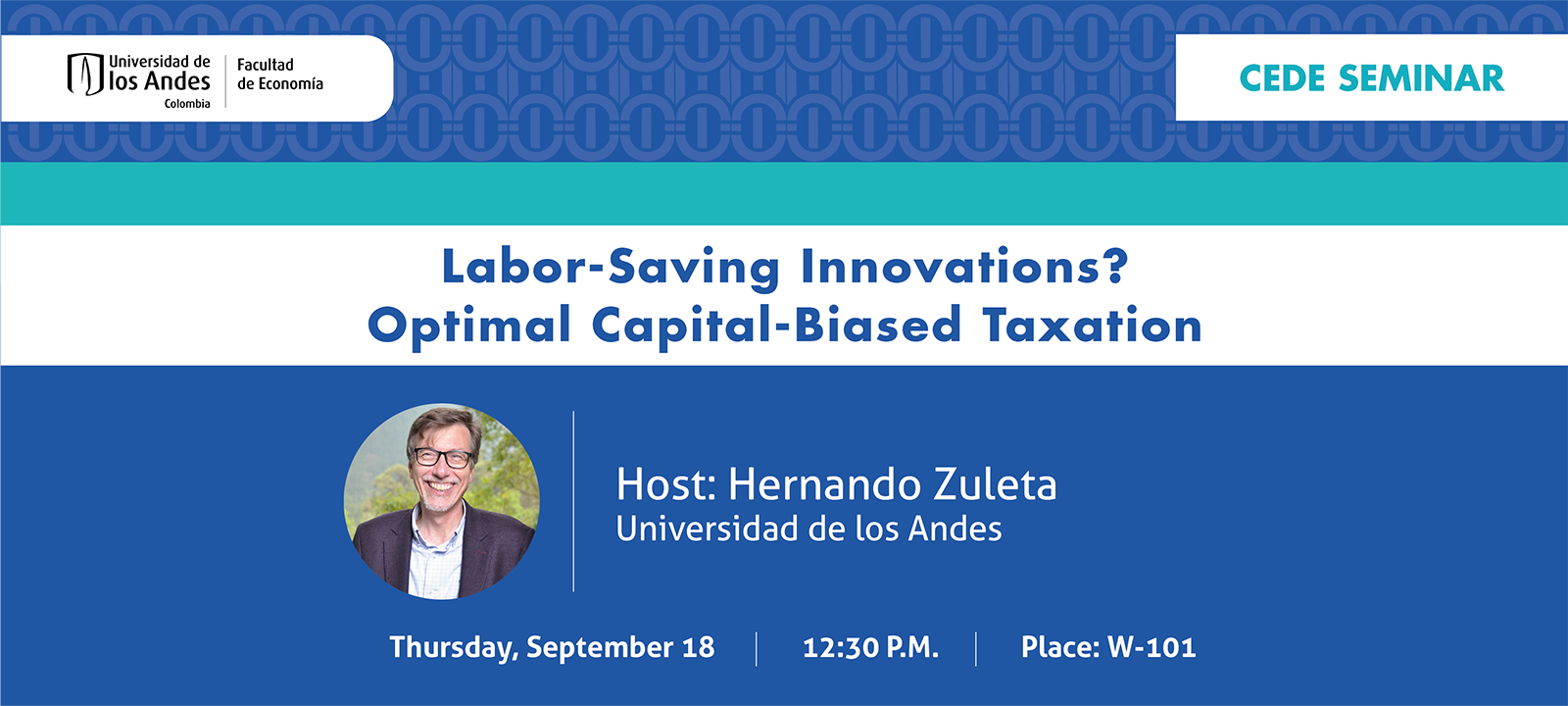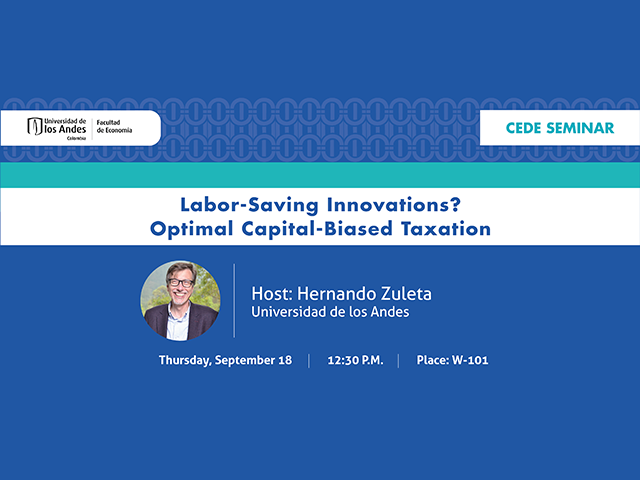CEDE Seminar - Hernando Zuleta

This paper investigates optimal taxation in a growth model with capital-biased technological change. We study how the optimal allocation of resources between capital accumulation and innovation depends on who controls this decision. Three scenarios are considered: a centralized economy where a planner chooses the allocation to maximize output, and two decentralized economies that differ in their allocation mechanisms. In the first decentralized scenario, households allocate their savings between capital accumulation and innovation to maximize capital income. We show that: (i) If the production function is linear in capital stock, the decentralized solution is optimal. (ii) If the production function is concave in the capital stock, the decentralized solution is sub-optimal, allowing optimal taxation. In the second decentralized scenario, firms, rather than households, decide how to allocate investment resources. Although the firm also maximizes capital income, the resulting equilibrium diverges from both the planner’s and the household-driven case, leading to a distinct expression for the optimal tax. Across both decentralized settings, a tax on RD becomes necessary when the marginal return to capital deviates from the marginal return to innovation.

